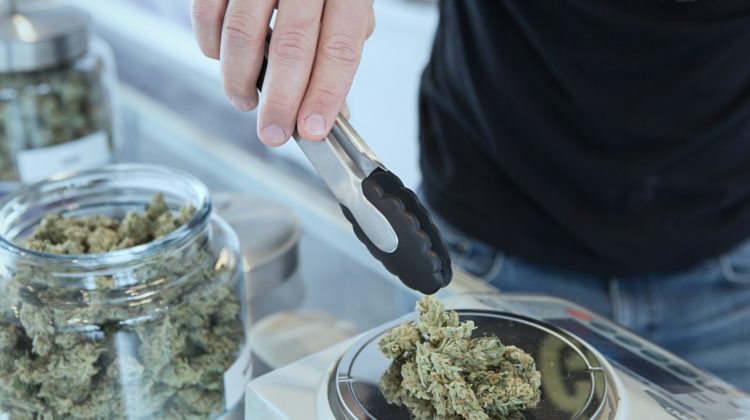
In 1996, California became the first U.S. state to legalize medical cannabis. It wasn’t until two decades later in 2016 that state voters legalized recreational cannabis. But, before this, one of the first public medical cannabis dispensaries in the nation — San Francisco Cannabis Buyers’ Club — opened in San Francisco in 1994.
The San Francisco Cannabis Buyers’ Club
Denis Peron, a director of the San Francisco Buyers’ Club director, worked closely with Mary Jane Rathbun, aka Brownie Mary, to advocate for medical cannabis use in America. Together, they set a movement in motion. As Leafly reports:
“It is not hyperbole to say that if you are able to enjoy legal cannabis where you live or, more importantly, are able to use cannabis to help manage pain or treat any number of conditions, you owe a great deal of thanks to the LGBT community and its supporters who fought for compassion for all.”
The medical legalization of cannabis in California originated from the AIDS epidemic. Advocates like Peron and Mary pushed for patients to use cannabis to treat things like nausea, and lack of appetite.
To date, all states except Idaho, Nebraska, and Kansas allow regulated and limited public access to cannabis. As a result of spreading legalization, the U.S. currently has between 5,000-7,000 dispensaries nationwide, according to Pot Guide, and the industry is now worth up to $24.8 billion.
Cannabis Holds Entrepreneurial and Employment Opportunities
A recent 2021 Jobs Report by Leafly showed that the cannabis industry supplied more than 321,00 full-time jobs as of early 2021. Seventy-seven thousand jobs were added in 2020 alone.
There are now more cannabis employees in America than there are electrical engineers. In places like California, there are more cannabis industry employees than there are bank tellers, the report adds.
By 2027, the market is expected to be valued at $65.1 billion. In addition, around 70% of the U.S. population — or 230 million Americans — live in states with legalized, though limited, cannabis use, according to New Frontier Data. Furthermore, more than 61% of the population supports full federal legalization of the plant.
Consequently, states are raking in billions in retail sales. Last year, for example, sales in California and Massachusetts reached $1 billion, reports Marijuana Moment.
“As more states continue to legalize the recreational use of cannabis, the number of dispensaries across the United States has reached an all-time high,” reports cannabis security and technology company, Kisi.
In February 2021, Kisi conducted a study on the growth of dispensaries in the U.S. in 2021. They found Oklahoma (2,129), then California (1,400) and Oregon (1,344) to have the most retail shops.

But, how does Oklahoma, which has one-tenth the population of California and a younger industry, have more dispensaries? The answer lies in individual state regulations and licenses.
Local Cannabis Restrictions and Laws
In states with legal cannabis markets, however, there are cities that can ban or limit retail cannabis sales and storefronts like New Jersey and California.
According to data compiled in 2019 by marketing solutions company, Cannabiz Media, “There are a number of trends driving this disparity in the number of licensed cannabis dispensaries in Oklahoma versus California.”
Specifically, the disparity is due to the states’ histories and licensing structures. For example, California offers several more types of licenses than Oklahoma. Additionally, a retail license in Oklahoma costs $2,500 on average; in California, it costs $96,000 on average, according to Cannabiz Media’s data.
As a result of such policies, states like California have fewer dispensaries than states like Oklahoma.
The Fees: Application and Licensing Fees
Reports from Cova Software suggest that opening a dispensary ranges from $150,000 to $2 million. That includes key costs, like annual staffing at $250,000; yearly rent, which averages at $100,000, and $50,000 for renovation.


In addition, there are application fees that also vary from state-to-state. Those fees can cost around $50,000 just for the application alone. That means entrepreneurs spend a good amount of money even before they sell a single cannabis product. If approved, entrepreneurs must also pay an additional annual licensing fee — which also varies from state-to-state.
You also want to consider marketing fees like those incurred from creating a website. You can reduce the cost by using cannabis WordPress themes from Marijuana Marketing Xperts.
In states like Washington, the number of licenses is capped – costing about $25,000 each, plus legal fees, according to the National Cannabis Industry Association (NCIA).
In California, the application fee costs $1,000. If approved, the applicant must pay a licensing fee, which costs another $4,000 to $120,000, depending on the estimated value of the operation. In New Jersey, the application fee costs around $2,000 and another $18,000 for licensing, according to the industry security experts at CannaBeSecure.
Cannabis is Still Federally Illegal — but the Future is Bright
Regardless, cannabis is still federally illegal. Consequently, many dispensaries across the country cannot be insured or find adequate insurance, and are exposed to crime.
But President Joe Biden has put the cannabis industry on his list of priorities. Biden stated that his administration will pursue federal cannabis decriminalization, expunge prior cannabis convictions, reschedule cannabis under federal law, and allow states to enact their own cannabis laws. With the current political climate, the cannabis industry is expected to boom in the near future— and the opportunity for entrepreneurs will too.
Written by: Laura Arman
This article contains a paid-for sponsorship.



Leave a Reply